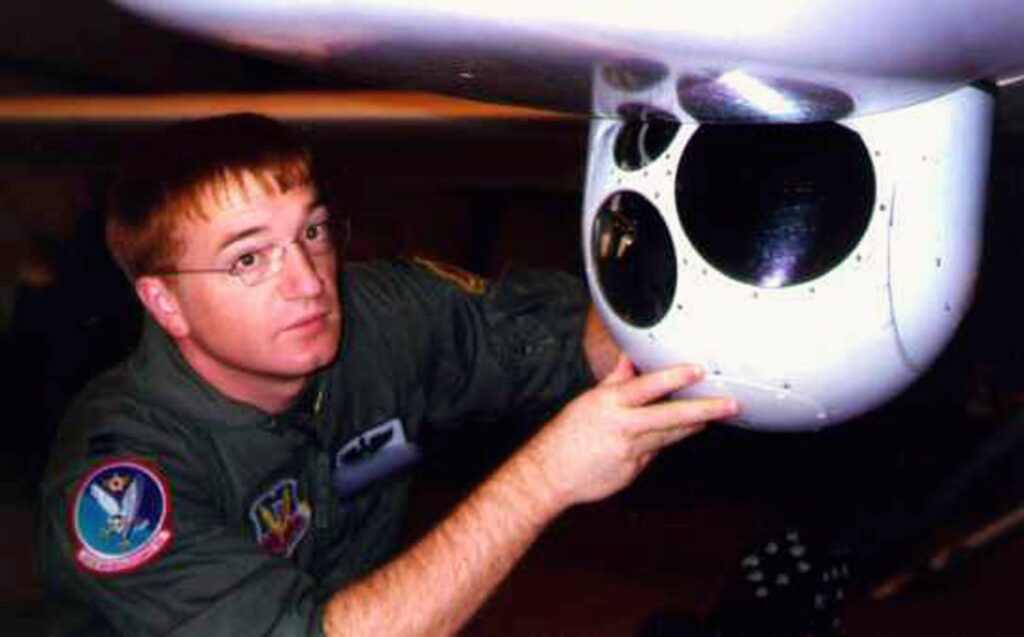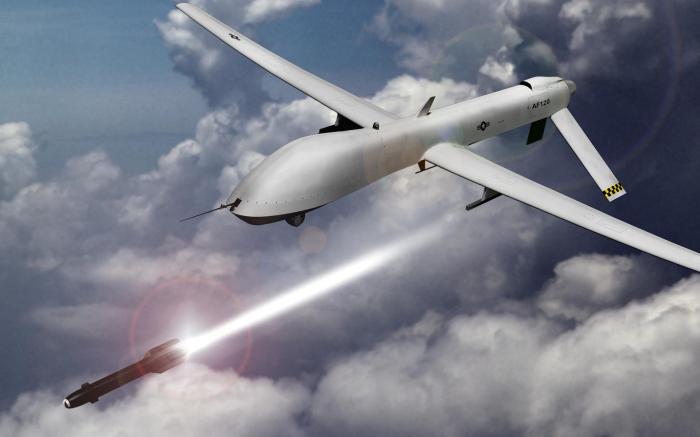The first person to fire a Hellfire missile from a Predator drone in combat and destroy a target writes here about his experience. Scott Swanson has never written about this before. Read on. The Editor.Early Predator Drone Pilot: I Had Bin Laden in My Crosshairs - ABC News
Flying a Predator drone in combat is nothing like playing a video game. Take it from me, the first person to pull the trigger in a lethal missile strike from a Predator.
As one of the early Air Force pilots to fly that Unmanned Aerial Vehicle, or UAV, I cringe when people make snide comments about the “Chair Force.” No, the pilot of a Remotely Piloted Aircraft can’t hear his plane’s engine, feel its motion, or smell that airplane smell; and yes, he (or she) has a joystick and throttle and a couple of TV screens in front of him. But there the comparison ends. Mentally, the pilot is inside a Predator, though the drone is half a world away. Emotionally, he is at war.
Scott Swanson at the Smithsonian recently
Scott Swanson served from 1987-2007 as an Air Force special operations (AFSOC) and rescue helicopter pilot, UAV pilot and acquisition officer. Now an international consultant who helps small companies commercialize emerging technologies, Swanson served as chief test pilot for the special Air Force unit that tested and employed the first armed Predator drones.
Nov 18, 2014 3:22pmA year before he was the first airman to ever unleash a Hellfire missile from a Predator drone in combat, airman Scott Swanson said he was at the controls of another Predator back in 2000 when a man believed to be Osama bin Laden was directly in his crosshairs.
“As I orbited our Predator over Tarnak Farms, a dusty jumble of buildings in a mud-walled compound just outside Kandahar, Afghanistan, we spotted a strikingly tall man in white robes being treated deferentially by a group of men,” Swanson writes in Breaking Defense today, his first public comments on the September 2000 incident, a year before the 9/11 attacks. “[Sensor operator Master Sgt.] Jeff [Guay] and I immediately knew we had bin Laden in our sights. The U.S. had been searching for OBL for years and now here he was, exquisitely framed on our screen.”
One major problem: At the time, Predator drones were for reconnaissance only and didn’t carry missiles. Bin Laden escaped from Tarnak and evaded American forces until he was killed by U.S. Navy SEALs a decade later in May 2011.
It wasn’t until a little more than a year after spotting bin Laden, and a month after the 9/11 attacks killed nearly 3,000 Americans, that a Predator fired its first missile in combat at a different militant target on Oct. 7, 2001. Swanson said he pulled the trigger.
Previously:
spendergast: New Whittle book reveals evolution and use of MQ-1 Predator UASspendergast: ‘Stop saying ‘uh-oh’ while you’re flying’: Drone crashes
spendergast: Kandahar Sensor Operator - MQ-9 Reaper
spendergast: Interview with a U.S. Air Force RPV pilot



No comments:
Post a Comment